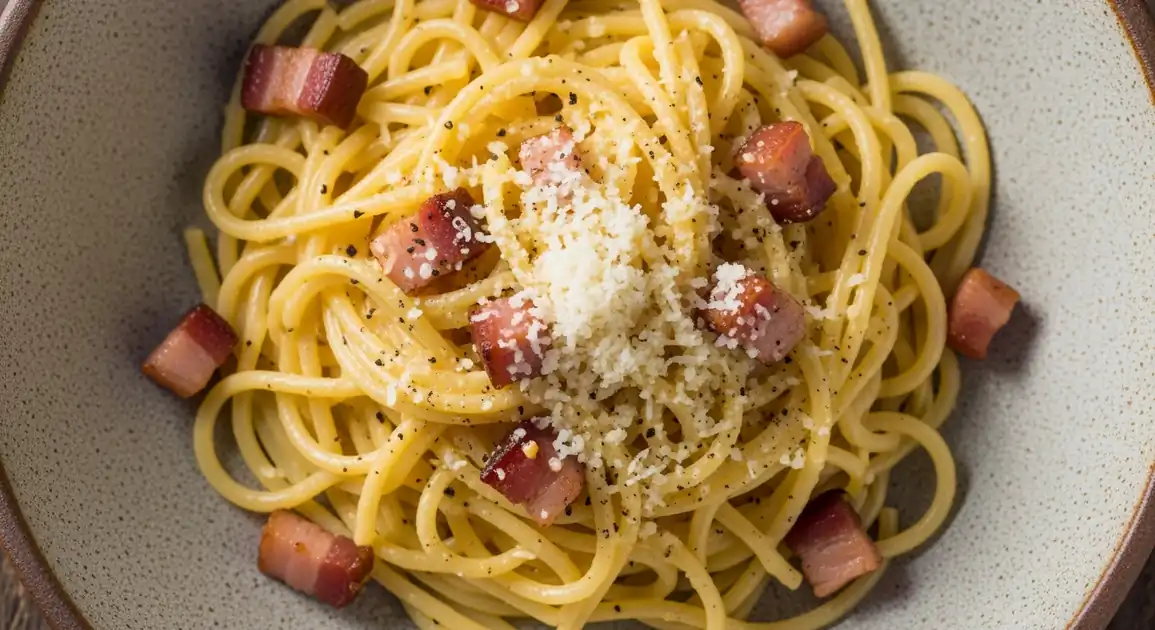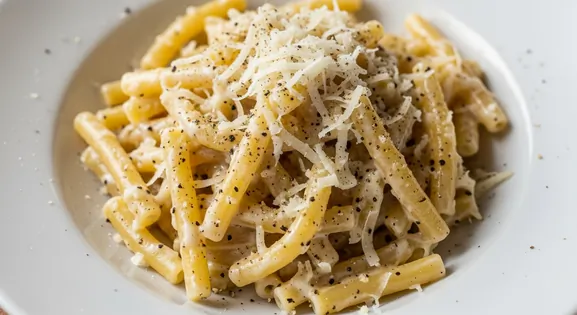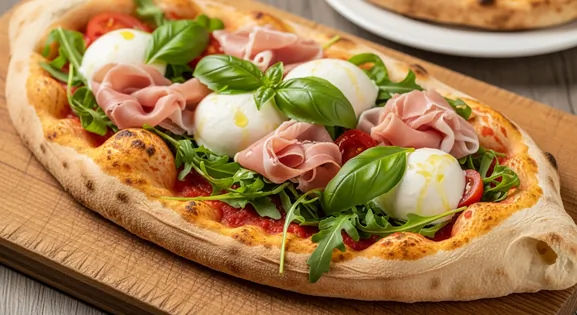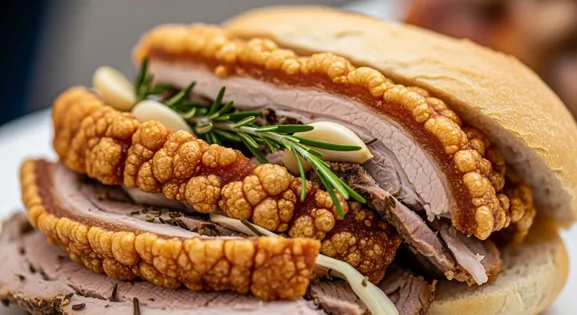Carbonara in Rome
Pasta alla Carbonara

The Essential Guide to Carbonara
Stepping into Rome, the quest for the perfect Carbonara becomes an immediate culinary pilgrimage. This isn't just pasta; it's a creamy, peppery embrace of Roman tradition, found in bustling trattorias and hidden gems alike. Prepare to twirl your fork into a dish that defines the Eternal City's soul.
New to Carbonara? Learn all about its history in our complete guide.
Pro Tips for an Authentic Experience
Many of Rome's best Carbonara spots are also known for 'quinto quarto' (offal) dishes, indicating a deep understanding of traditional Roman cuisine and ingredients like guanciale.
These types of establishments often offer a more authentic, home-style Carbonara experience compared to formal 'Ristoranti' or tourist-focused places.
While spaghetti is common, many Romans prefer rigatoni or mezze maniche for Carbonara, as the shape holds the sauce better. A restaurant offering these options shows local insight.
Authentic vs Imitation: The Telltale Signs
What to Look For
-
Visible pieces of guanciale (not pancetta or bacon)
In Rome, authentic establishments use only proper guanciale. The fat content and flavor are distinct and essential to the dish's safety and flavor profile in the Roman climate.
-
Fresh eggs visibly on display or mentioned on the menu
Quality Roman restaurants proudly source local eggs and will often mention it. Fresh, quality eggs are essential for both taste and safety.
-
Places with high local clientele in Testaccio or Trastevere neighborhoods
Romans are extremely particular about carbonara. Restaurants serving locals in these historically food-conscious neighborhoods maintain the highest standards.
What to avoid
-
Restaurants offering 'Carbonara with cream' option
In Rome, this indicates a tourist-oriented establishment not following proper preparation techniques, raising concerns about overall food handling practices.
-
Exceedingly cheap carbonara in tourist areas
Quality guanciale and Pecorino Romano are expensive in Rome. Suspiciously cheap versions likely use inferior ingredients or cut corners on preparation.
-
Carbonara with perfectly uniform, cubed meat pieces
Proper Roman guanciale is cut into irregular strips or small chunks. Too-uniform pieces suggest pre-packaged ingredients rather than fresh preparation.
Ordering Like a Local
When ordering Carbonara in Rome, confidently ask for 'una Carbonara, per favore.' Avoid asking for modifications like adding cream or different cheeses, as this is considered sacrilege. It's typically served as a 'primo piatto' (first course), so consider if you'll have a 'secondo' (main). Don't be afraid to ask about the guanciale source or pasta type; a proud chef will appreciate your interest in authenticity. Remember, Romans eat late, so dining after 8 PM often means a more local crowd.
Where to Find Carbonara in Rome
Testaccio
A historically working-class area with strong culinary traditions, home to some of Rome's most respected Carbonara.
Mercato di Testaccio, Monte Testaccio
Lunch (1 PM - 2:30 PM), Dinner (8 PM - 10 PM)
Trastevere
Traditional area with many authentic 'trattorie', though beware of tourist traps near main squares.
Santa Maria in Trastevere, Piazza Trilussa
Dinner (8 PM - 10 PM)
San Lorenzo
A vibrant university district known for its authentic, budget-friendly eateries and a strong local student presence, making it a reliable spot for traditional Roman Carbonara away from tourist crowds.
Sapienza University
Dinner (8 PM - 11 PM)
Centro Storico (Historic Center)
While bustling with tourists, the historic center still hides authentic gems. Seek out smaller, family-run trattorias on side streets, where genuine Roman Carbonara can be found with careful research.
Campo de' Fiori (surrounding streets), Via del Governo Vecchio
Lunch (1 PM - 2:30 PM), Dinner (8 PM - 10 PM)
Vendor Tips
- Romans eat late - restaurants filled with tourists at 7 PM but empty of locals are a red flag.
- Ask 'È fatta con la panna?' (Is it made with cream?). They should emphatically say no.
- Check if they use guanciale - proper Roman places will never substitute bacon.
- Look at other diners' plates - authentic Carbonara should have visible black pepper and pieces of guanciale.
A Guide to Price, Portions, and More
Dietary Information
Important Note for Travelers: Your safety is our priority. Below are the common allergens associated with the traditional preparation of this dish. However, recipes and ingredients can vary significantly between establishments. Always confirm all ingredients directly with the food vendor before ordering, especially if you have a severe allergy.
Potential Allergens
Dietary Suitability
Price Guide
Budget Tips
- Expect to pay 10-14 EUR in most traditional Roman restaurants.
- Neighborhood 'trattorie' in areas like Testaccio or San Lorenzo offer better value than those near major attractions.
- Lunch is typically more affordable than dinner, especially with 'menu del giorno' (daily menu) options.
- Some wine bars ('enoteche') offer excellent Carbonara at reasonable prices.
- Be wary of very cheap Carbonara (under 8 EUR) in touristy areas - likely using inferior ingredients.
Serving & Seasonality
Served in wide, shallow bowls or plates as a 'primo piatto' (first course). Portion sizes are moderate, designed to be part of a full meal potentially including 'secondo' (main) and 'contorno' (side).Best Times to Enjoy
- Lunch: Romans typically lunch from 1 PM - 2:30 PM.
- Dinner: Prime dinner hours 8 PM - 10 PM, with restaurants opening around 7:30 PM.
Seasonal Availability
Available year-round.
A Cultural Deep Dive
Local Significance
Carbonara is considered one of the four cornerstones of Roman pasta cuisine along with Amatriciana, Cacio e Pepe, and Gricia. Despite being relatively recent (mid-20th century), it has become a symbol of Roman culinary identity.
Eating Customs
- Never cut the pasta with a knife - twirl it with a fork.
- Finish while hot - Romans consider cold Carbonara sacrilege.
- Don't ask for additional cheese before tasting - the dish should be perfectly balanced.
- Acceptable to clean the plate with bread ('fare la scarpetta') to enjoy the last bit of sauce.
Local Styles of Carbonara
Rigatoni alla Carbonara
Many Romans prefer rigatoni or mezze maniche over spaghetti, as the tube shape holds sauce well inside.
Carbonara con Uova Fresche di Giornata
Specifying the use of extremely fresh, often same-day eggs for superior flavor and texture.
Carbonara con Carciofi
A seasonal variation found in spring, where tender Roman artichokes are added to the traditional Carbonara, offering a unique earthy flavor.
Carbonara con Zucchine
A lighter, seasonal Roman variation, especially popular in summer, where thinly sliced zucchini are added to the sauce, providing a fresh counterpoint to the richness.
Practical How-To Guides
Navigating Rome's Carbonara Geography
Discover how to pinpoint the most authentic Carbonara across Rome's diverse neighborhoods, ensuring a truly local culinary experience.
- Visit the Testaccio district, particularly around the former slaughterhouse area, where the dish has deep working-class roots.
- Explore small trattorias in Trastevere away from the main squares, where local families have been making carbonara for generations.
- Seek out establishments in the Monti district that specify 'Carbonara Tradizionale' or 'Carbonara Roma' on their menus.
- During summer, when eggs require extra care, choose established restaurants rather than newer or heavily touristic places.
- Look for restaurants that proudly list their guanciale source, particularly those using Amatrice or Monte Conero varieties.
Understanding Roman Egg Safety Traditions
Gain insight into the traditional Roman techniques and practices that ensure the safety and quality of egg-based dishes like Carbonara.
- Observe if pasta is tossed away from direct heat - proper Roman technique uses residual heat, not direct cooking, to safely prepare the egg sauce.
- Notice steam rising when the hot pasta meets the egg mixture - this indicates proper temperature for safe consumption.
- If concerned, request 'ben mantecato' (well-mixed) preparation, which ensures thorough heat distribution.
- During Rome's hot summer months (June-September), quality establishments take extra precautions with egg storage and handling.
- Look for restaurants using the traditional method of mixing eggs with only yolks or a controlled yolk-to-white ratio, which affects both safety and texture.
Eating Carbonara Like a Roman
Embrace the true Roman dining etiquette and customs to fully savor your Carbonara experience, just like a local.
- Dine during proper Roman hours - locals eat lunch from 1-3 PM and dinner after 8 PM, when kitchens are most attentive to fresh preparation.
- Order carbonara as a 'primo piatto' (first course), not as your main dish, following proper Roman meal structure.
- Don't add extra cheese or pepper - Roman chefs carefully calibrate these elements for the perfect balance.
- Pair with local Lazio wines like Frascati or Est! Est!! Est!!! as Romans traditionally do.
- Respect the no-substitution philosophy - modifications to carbonara are considered culturally inappropriate in traditional Roman establishments.
Our Commitment to Quality
At Tasteplorers, our mission is to provide the most accurate and useful travel information in the world. To achieve this, all content on this site is created through our unique editorial framework. We utilize leading AI research tools, guided by our proprietary prompts, and a multi-stage validation process. This entire system is overseen by our editorial team to ensure everything we publish meets our high standards for accuracy, cultural nuance, and practical value for travelers.
Learn more about our Editorial Process and our Mission.
Countries
Explore regions
Europe
Discover Europe's diverse culinary landscape, from Mediterranean flavors to hearty Alpine fare. Learn to navigate markets, decode menus, and eat like a local.
Latin America & Caribbean
Discover the vibrant cuisines of Latin America & the Caribbean. Our expert guide covers everything from Mexican street food to Peruvian ceviche and market tips.
Oceania
Explore Oceania's diverse food scene. Learn about Polynesian earth ovens, Fijian feasts, and the vibrant café culture of Australia and New Zealand.
Southeast Asia
Explore Southeast Asia's diverse food cultures from Thailand to Vietnam. Get expert tips on navigating spice levels, choosing quality vendors, and understanding the rich traditions of the region.


